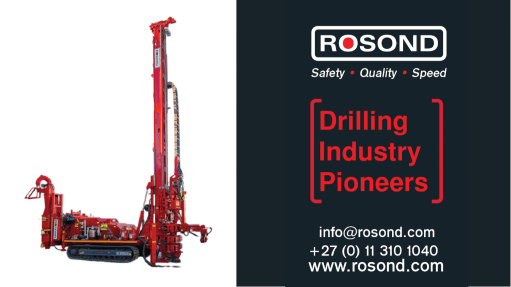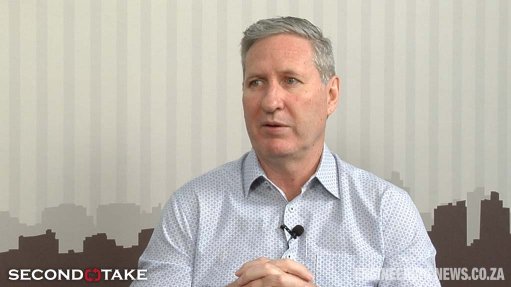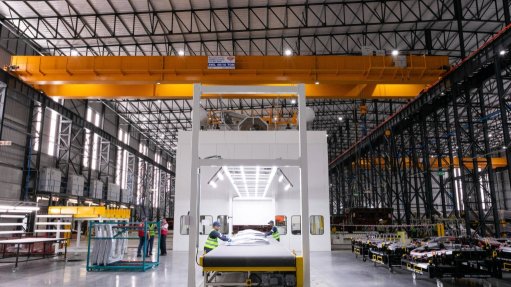CDH clarifies ‘new’ FIDIC rules that construction sector still struggles with
Eight years after the official release of the 2017 edition of the FIDIC, or International Federation of Consulting Engineers, suite of contracts including the Red, Yellow and Silver Books, law firm Cliffe Dekker Hofmeyr (CDH) says the market still appears to be reluctant to adopt this edition.
The FIDIC contract forms are used in South Africa for a range of engineering and construction projects, with the Red Book governing construction projects where the employer designs the project, the Yellow Book involving plant and design-build projects where the contractor designs the project and the Silver Book being referenced for engineering, procurement and construction or turnkey projects.
The FIDIC contracts provide a framework for managing and executing construction projects from planning to completion. These legal agreements regulate the relationship between the client and the contractor, ensuring fair and balanced terms and conditions for all parties related to a project.
While FIDIC contracts reduce the risk of disputes and misunderstandings between parties, it still provides for a structured claims and dispute process, with timelines, in more detail than the prior 1999 FIDIC contracts.
CDH says that, by understanding the basic of FIDIC contracts, owners or developers can ensure construction projects run smoothly, on time and within budget.
The law firm acknowledges, however, that the 2017 edition of FIDIC contracts places a greater administrative load on all parties – the employer, the engineer and the contractor.
The contracts contain stricter notice and claims procedures, demanding greater attention to detail and more resources for contract administration. The 2017 Red Book general conditions alone are 50% longer than the 1999 version.
The more complex procedures demanded by the 2017 FIDIC contracts require parties to employ sophisticated teams with expertise in contract administration. Failure to comply with the prescriptive requirements can severely impact a party’s rights and entitlements.
CDH points out that public employers, especially those in developing countries, may lack the internal capacity to implement more rigorous contract management required by the 2017 FIDIC contracts, which can lead to project delays and more claims.
In respect of disputes, the 2017 FIDIC procedure includes a mandatory one-person or three-person dispute avoidance or adjudication board (DAAB), binding engineer determinations and a three-tiered system to prevent arbitration.
CDH banking, finance and projects senior associate Zipho Tile explains that disputes or claims often arise from “force majeure” declarations or, as the 2017 FIDIC version deems, “exceptional events”.
Contracts typically provide for parties to extend timeframes or relief from liability in exceptional event circumstances, with some costs related to recovery for specific listed events and not financial compensation as such.
Tile says the 2017 FIDIC contracts provide that contractors’ indemnities cover acts, errors or omissions in carrying out design obligations, leading to the works not being fit for purpose.
According to Tile, this reinforces contractor accountability where design-built risk is assumed. “You would need to prove negligence if contractors did not deliver according to design requirements.”
In turn, employers must indemnify for loss or damage to property caused by the employer’s personnel or agents. “We should approach these [2017 FIDIC] documents from a practical and commercial perspective. Negotiations should be business-minded and balanced, with due appreciation for the engineering and construction sector,” Tile says.
Moreover, CDH dispute resolution director Khaya Mantengu explains that FIDIC places an obligation on the engineer to achieve an agreement between the employer and the contractor through a defined process. The first step is always consultation within 42 days or a period agreed by the parties, with the engineer required to provide a record of the consultation before making a determination.
Any party that is dissatisfied with an engineer’s determination should notify other parties of such within 28 days.
Mantengu points out that FIDIC encourages contemporary records to be kept – including minutes and details about every meeting between parties during the project process – so that a fully detailed claim can be submitted within 84 days of an exceptional event.
The 2017 FIDIC edition places a lot more emphasis on the role of the engineer as the intervening, independent third-party between two disputing parties. For an engineer to achieve an agreement between the employer and a contractor, for example, the law requires the engineer to act neutrally when making a determination and not act for the employer.
Should an engineer not make a determination within 42 days, or a period agreed between the parties, a claim can be rejected and deemed to be a dispute of the contract.
Thereafter, CDH resolution director Clive Rumsey explains, a dispute resolution process starts.
A material change with the 2017 FIDIC is that the claim procedure encompasses three parts: employers’ claims for additional payment or extension of the defects notification period, contractors claims for additional payment and/or extension of time and any other entitlement or relief that a party believes it has.
The trigger for these events is different but notice of any claim is required to be given as soon as practicable after the claiming party becomes aware of the other party’s disagreement with the requested entitlement.
The 2017 edition of the FIDIC contracts has a clearer definition of claim and what is constitutes. There are also time-barring provisions, requiring claims to be submitted within 28 days following an event or circumstance.
Notably, Rumsey says, disputes are defined as one party making a claim against another party, or the other party or engineer rejecting the claim in whole or in part, or the first party does not acquiesce.
The timeframes are there to avoid timelines being delayed indefinitely.
Rumsey urges construction sector stakeholders to carefully determine which FIDIC contracts are applicable to their operations and to consult with experienced advisers when a claim or dispute arises.
Article Enquiry
Email Article
Save Article
Feedback
To advertise email advertising@creamermedia.co.za or click here
Comments
Press Office
Announcements
What's On
Subscribe to improve your user experience...
Option 1 (equivalent of R125 a month):
Receive a weekly copy of Creamer Media's Engineering News & Mining Weekly magazine
(print copy for those in South Africa and e-magazine for those outside of South Africa)
Receive daily email newsletters
Access to full search results
Access archive of magazine back copies
Access to Projects in Progress
Access to ONE Research Report of your choice in PDF format
Option 2 (equivalent of R375 a month):
All benefits from Option 1
PLUS
Access to Creamer Media's Research Channel Africa for ALL Research Reports, in PDF format, on various industrial and mining sectors
including Electricity; Water; Energy Transition; Hydrogen; Roads, Rail and Ports; Coal; Gold; Platinum; Battery Metals; etc.
Already a subscriber?
Forgotten your password?
Receive weekly copy of Creamer Media's Engineering News & Mining Weekly magazine (print copy for those in South Africa and e-magazine for those outside of South Africa)
➕
Recieve daily email newsletters
➕
Access to full search results
➕
Access archive of magazine back copies
➕
Access to Projects in Progress
➕
Access to ONE Research Report of your choice in PDF format
RESEARCH CHANNEL AFRICA
R4500 (equivalent of R375 a month)
SUBSCRIBEAll benefits from Option 1
➕
Access to Creamer Media's Research Channel Africa for ALL Research Reports on various industrial and mining sectors, in PDF format, including on:
Electricity
➕
Water
➕
Energy Transition
➕
Hydrogen
➕
Roads, Rail and Ports
➕
Coal
➕
Gold
➕
Platinum
➕
Battery Metals
➕
etc.
Receive all benefits from Option 1 or Option 2 delivered to numerous people at your company
➕
Multiple User names and Passwords for simultaneous log-ins
➕
Intranet integration access to all in your organisation





















